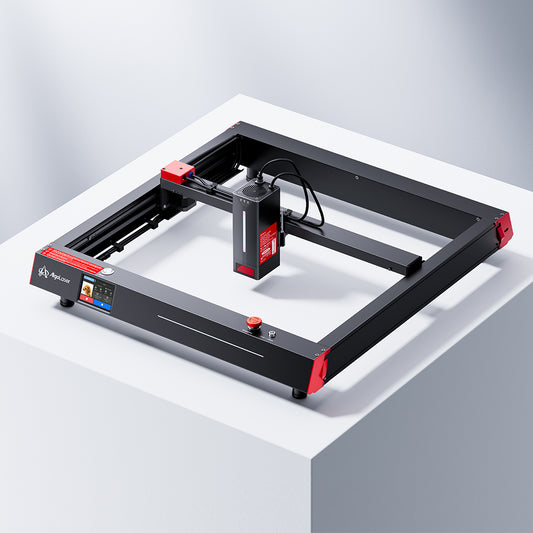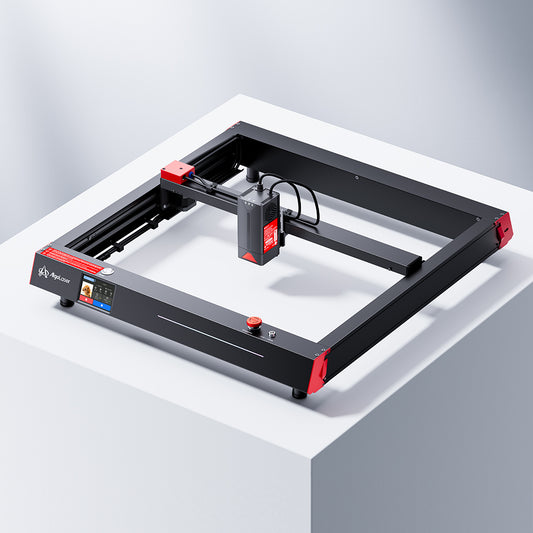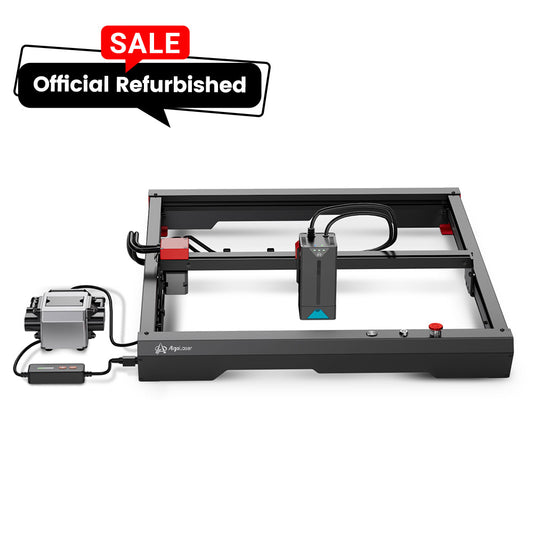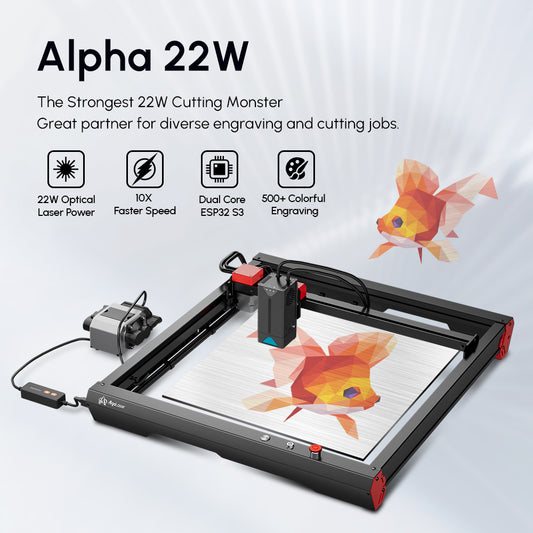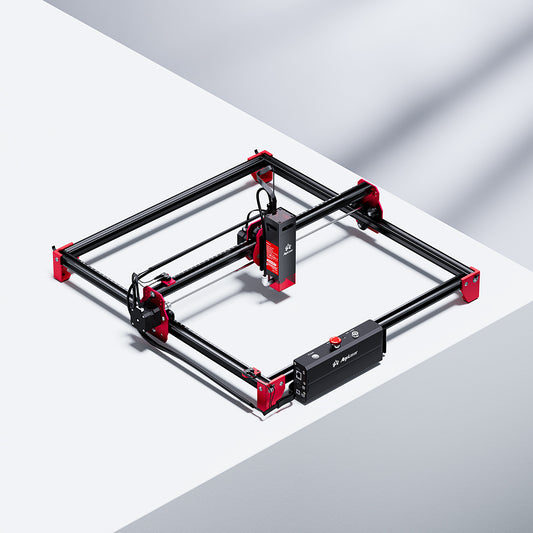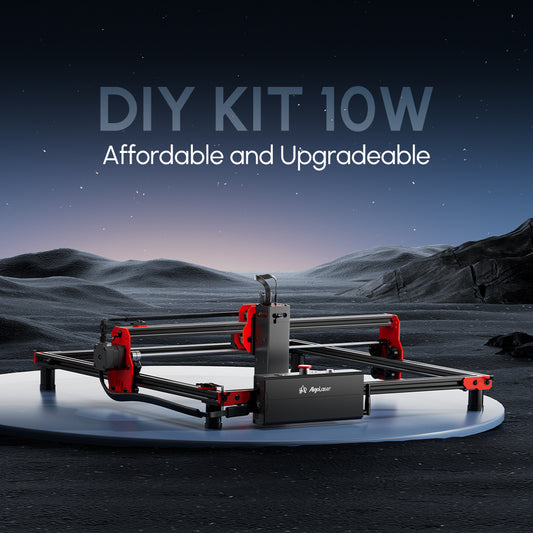Woodworking Transformed: Comparing Diode Laser Engraving vs. Traditional Engraving
Wood has always been a canvas of creativity for both artisans and everyday makers. For centuries, engraving on wood has been done using manual tools—carving knives, chisels, gouges, and even rotary engravers—to create everything from heirloom furniture to ornate signs. The tactile nature of carving wood by hand is a skill that blends precision with artistry, requiring patience and dedication. These methods hold historical and cultural significance, passed down through generations, often representing a craftsman's unique touch.
But with the rise of modern technology, diode laser engravers have changed the landscape. Compact, affordable, and digitally controlled, these machines offer detailed results in a fraction of the time it takes to carve by hand. With the push of a button, you can engrave personalized artwork, product branding, or decorative patterns onto nearly any type of wood. It's no wonder laser engravers are now popping up in home workshops, classrooms, and professional studios alike. Let's break down how they stack up against traditional woodworking engraving tools.
1. Precision and Detail
Diode Laser Engraving:
Diode lasers offer unmatched precision by focusing a concentrated beam of light onto the wood surface. The beam size can be as narrow as 0.06 mm, allowing for incredibly fine lines, detailed shading, and high-resolution imagery—even photographic-quality engravings. These machines can replicate text, patterns, and even grayscale portraits with stunning accuracy. You can achieve uniformity across dozens of items, which is invaluable for product makers and business owners.
According to Reddit users on r/Laserengraving, diode lasers have transformed their expectations for detail. One user shared how a 20W diode laser created an ultra-fine Celtic knot pattern across maple wood, something that would have been nearly impossible with hand tools. Another user engraved a grayscale image of a mountain scene, complete with shaded clouds and intricate trees, all without touching a chisel.
Traditional Engraving:
Traditional engraving tools—such as Pfeil Swiss Made gouges, BeaverCraft chip carving knives, and Flexcut V-tools—excel at creating texture and depth. However, achieving photorealistic or consistent designs requires considerable time and expertise. Each line must be carved manually, and maintaining uniformity between pieces can be difficult. Precision is ultimately limited by the human hand and the grain of the wood.
Woodworkers on r/Woodworking and r/lasercutting have noted that while hand carving has a personal and organic aesthetic, it's difficult to match the pixel-perfect detail a laser can offer. Still, for artistic relief carvings or traditional ornaments, hand tools remain an irreplaceable part of the craft.

2. Speed and Efficiency
Diode Laser Engraving:
Once the digital design is ready, diode laser engraving is as easy as uploading a file and clicking start. A well-calibrated laser can engrave dozens of pieces in one sitting, making it ideal for mass production. Some makers use it to fulfill large orders for personalized cutting boards, signs, or wooden business cards—often completing a full order in just a few hours. There's no need for manual tracing, cutting, or error correction.
Multiple Reddit users in r/lasercutting reported that they transitioned from rotary carving to diode laser engraving after realizing the time savings. One Etsy seller explained how they reduced their production time by 80%, enabling them to fulfill 10x more orders during peak seasons. Others noted that their laser engraver "works while they sleep," churning out custom designs overnight with zero fatigue.
Traditional Engraving:
Traditional carving is a labor of love, but it's not fast. Depending on the complexity of the design and the hardness of the wood, engraving a single piece may take several hours or even days. Sketching, measuring, outlining, and carving all require full attention and considerable hand-eye coordination. For those working with tools like the Dremel 4300 rotary tool, even power carving demands frequent bit changes, repositioning, and cleanup.
Users in r/woodworking often describe carving as meditative but slow. One commented that while laser machines might pump out work fast, the slow pace of traditional carving gives them a deeper connection to their materials. That said, when deadlines or customer volume matter, manual engraving simply can't keep up.
3. Ease of Use and Learning Curve
Diode Laser Engraving:
Contrary to popular belief, diode laser engravers are beginner-friendly. Most units today come with guided setup instructions, user-friendly software like LightBurn or LaserGRBL, and touchscreen control panels. Even without prior experience, new users can learn the basics within a day or two—especially with help from YouTube tutorials or Reddit forums. Once the learning curve flattens, experimenting with new settings, materials, and design types becomes an exciting creative process.
On r/Laserengraving, countless users shared that their first experiences were smoother than expected. One explained how their 15-year-old daughter started using a laser to engrave wooden bookmarks for her school fundraiser after just a weekend of learning. With precise control over power, speed, and resolution, even hobbyists can produce professional-level results.
Traditional Engraving:
Learning to use carving tools well takes significant time and physical practice. It's not just about control—it's about understanding wood grain, sharpening techniques, safe tool handling, and how different woods respond to pressure. Beginners often struggle with gouging too deep or splintering the surface, and mistakes can't be undone. You'll also need to regularly maintain tools, including stropping knives and replacing rotary bits.
On r/Woodcarving, users often emphasize that while hand carving is rewarding, it's not for the faint of heart. One user said, "It took me 6 months just to feel confident carving letters." However, the tactile feedback and skill development are also what many love most about the craft.

4. Material Compatibility and Versatility
Diode Laser Engraving:
Diode lasers aren't limited to wood. They can engrave a wide range of materials including leather, acrylic, cardboard, cork, slate, and even anodized aluminum with the right settings. Some users even coat metal surfaces with paint or laser-marking spray to achieve high-contrast engravings. This makes diode lasers extremely flexible for multi-material projects like mixed-media signage, custom gifts, or personalized tech gear.
Many Redditors on r/lasercutting have shown off projects ranging from engraved skateboards to custom phone cases and metal business cards. The ability to switch from birch plywood to faux leather or bamboo with a simple parameter tweak makes the diode laser a true all-in-one tool for creative makers.
Traditional Engraving:
Wood is the domain of traditional engraving. Carving tools are usually optimized for softwoods (like basswood or pine) or hardwoods (like walnut or oak). Engraving on other materials, such as acrylic or metal, is either impractical or impossible without specialized tools. Even pyrography (wood burning) lacks the material range of lasers, though it can complement carved designs.
If your focus is strictly wood-based, carving tools can take you far. But if you want to experiment with other surfaces or mix materials, lasers offer far greater versatility.
5. Safety and Cleanliness
Diode Laser Engraving:
Laser engraving is relatively clean compared to traditional carving. With proper ventilation or built-in enclosures, the only byproducts are smoke and a faint burnt smell. Many diode laser models come with air assist, exhaust ports, or HEPA filters, making them suitable for indoor use. Safety goggles are a must, but most machines include built-in protections like flame detection or motion stops.
In r/Laserengraving, one user showed how they turned a small laundry room into a full engraving studio by installing an air vent and fireproof mat. Another mentioned engraving projects with their kids, thanks to safety enclosures and supervised software control.
Traditional Engraving:
Wood shavings, dust, and splinters are part of the hand-carving experience. Whether you're using a mallet and chisel, chip carving knife, or a rotary engraver, you'll generate a mess. Safety goggles and a dust mask are highly recommended—especially when working with exotic hardwoods that can trigger allergies. Rotary tools add noise, heat, and vibration to the mix.
Some Reddit users noted that hand carving is more environmentally peaceful—no electric hum, no need for digital files—but others complain of constant cleanup, especially when working indoors. Dust collectors and shop vacs are standard for serious carvers.

6. Customization and Digital Design
Diode Laser Engraving:
Diode laser engravers shine when it comes to personalization. Using vector-based design software like Adobe Illustrator, CorelDRAW, or Inkscape, you can create scalable, precise artwork that a laser replicates exactly. From company logos to family photos, digital customization allows you to personalize items with speed and consistency. Want to engrave someone's name in 20 different fonts? You can do it in under an hour.
Reddit makers frequently post about batch orders for wedding favors, pet tags, holiday ornaments, and branded wooden merchandise. Laser engraving empowers creative professionals to offer personalized products without sacrificing production time.
Traditional Engraving:
Customization by hand is a delicate and often non-reproducible process. While you can personalize items with carving, each one will have minor variations—sometimes charming, sometimes inconsistent. Repeating the exact same font, pattern, or layout across multiple pieces takes advanced skill. For example, carving a company logo by hand requires steady lines, perfect proportions, and a flawless transfer method like carbon paper or template tracing.
That said, the imperfections in hand engraving are often what make each piece special. Reddit users often refer to hand-engraved work as "slow art"—each piece tells a story, shaped by the hands that made it.
Summary Table: Diode Laser vs. Traditional Wood Engraving
| Category | Diode Laser Engraving | Traditional Wood Engraving |
|---|---|---|
| Precision & Detail | Ultra-fine resolution (0.06 mm); consistent photo-quality engraving | Depth and texture possible; fine detail limited by hand skill |
| Speed & Efficiency | Fast production; ideal for bulk orders or complex artwork | Time-intensive; better suited for one-off or artistic pieces |
| Ease of Use | Beginner-friendly software; learn basics in days | Steep learning curve; months to years of practice |
| Material Compatibility | Works on wood, leather, acrylic, slate, cork, metal (coated) | Primarily softwood and hardwood; limited to natural materials |
| Safety & Cleanliness | Low mess; requires safety goggles and proper ventilation | Wood dust and chips; rotary tools add noise and vibration |
| Customization | Precise and repeatable; perfect for logos, fonts, graphics | Hand-drawn charm; hard to reproduce identical results |
